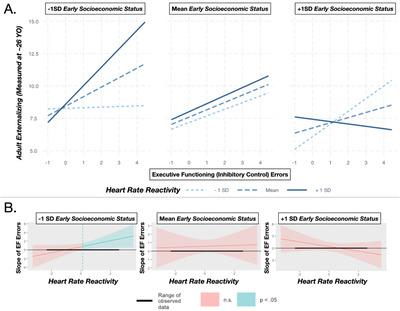Our official English website, www.x-mol.net, welcomes your
feedback! (Note: you will need to create a separate account there.)
Developmental connections between socioeconomic status, self-regulation, and adult externalizing problems
Developmental Science ( IF 3.1 ) Pub Date : 2022-03-29 , DOI: 10.1111/desc.13260 Kelly R Barry 1 , Jamie L Hanson 1, 2 , Destany Calma-Birling 3 , Jennifer E Lansford 4 , John E Bates 5 , Kenneth A Dodge 4
Developmental Science ( IF 3.1 ) Pub Date : 2022-03-29 , DOI: 10.1111/desc.13260 Kelly R Barry 1 , Jamie L Hanson 1, 2 , Destany Calma-Birling 3 , Jennifer E Lansford 4 , John E Bates 5 , Kenneth A Dodge 4
Affiliation

|
Children from low socioeconomic status (SES) backgrounds are at particularly heightened risk for developing later externalizing problems. A large body of research has suggested an important role for self-regulation in this developmental linkage. Self-regulation has been conceptualized as a mediator as well as a moderator of these connections. Using data from the Child Development Project (CDP, N = 585), we probe these contrasting (mediating/moderating) conceptualizations, using both Frequentist and Bayesian statistical approaches, in the linkage between early SES and later externalizing problems in a multi-decade longitudinal study. Connecting early SES, physiology (i.e., heart rate reactivity) and inhibitory control (a Stroop task) in adolescence, and externalizing symptomatology in early adulthood, we found the relation between SES and externalizing problems was moderated by multiple facets of self-regulation. Participants from lower early SES backgrounds, who also had high heart rate reactivity and lower inhibitory control, had elevated levels of externalizing problems in adulthood relative to those with low heart rate reactivity and better inhibitory control. Such patterns persisted after controlling for externalizing problems earlier in life. The present results may aid in understanding the combinations of factors that contribute to the development of externalizing psychopathology in economically marginalized youth.
中文翻译:

社会经济地位、自我调节和成人外化问题之间的发展联系
来自低社会经济地位 (SES) 背景的儿童以后出现外化问题的风险特别高。大量研究表明自我调节在这种发展联系中起着重要作用。自我调节已被概念化为这些联系的中介和调节者。使用儿童发展项目 (CDP, N = 585),我们在一项长达数十年的纵向研究中,使用频率论和贝叶斯统计方法,探讨了这些对比(中介/调节)概念化在早期 SES 和后来外化问题之间的联系。将青春期的早期 SES、生理学(即心率反应性)和抑制控制(Stroop 任务)以及成年早期的外化症状联系起来,我们发现 SES 与外化问题之间的关系受到自我调节的多个方面的调节。来自较低早期 SES 背景的参与者,也有较高的心率反应性和较低的抑制控制,相对于心率反应性较低和抑制控制较好的参与者,成年后外化问题的水平较高。在控制了生命早期的外化问题后,这种模式仍然存在。目前的结果可能有助于理解有助于经济边缘化青年外化精神病理学发展的因素组合。
更新日期:2022-03-29
中文翻译:

社会经济地位、自我调节和成人外化问题之间的发展联系
来自低社会经济地位 (SES) 背景的儿童以后出现外化问题的风险特别高。大量研究表明自我调节在这种发展联系中起着重要作用。自我调节已被概念化为这些联系的中介和调节者。使用儿童发展项目 (CDP, N = 585),我们在一项长达数十年的纵向研究中,使用频率论和贝叶斯统计方法,探讨了这些对比(中介/调节)概念化在早期 SES 和后来外化问题之间的联系。将青春期的早期 SES、生理学(即心率反应性)和抑制控制(Stroop 任务)以及成年早期的外化症状联系起来,我们发现 SES 与外化问题之间的关系受到自我调节的多个方面的调节。来自较低早期 SES 背景的参与者,也有较高的心率反应性和较低的抑制控制,相对于心率反应性较低和抑制控制较好的参与者,成年后外化问题的水平较高。在控制了生命早期的外化问题后,这种模式仍然存在。目前的结果可能有助于理解有助于经济边缘化青年外化精神病理学发展的因素组合。











































 京公网安备 11010802027423号
京公网安备 11010802027423号